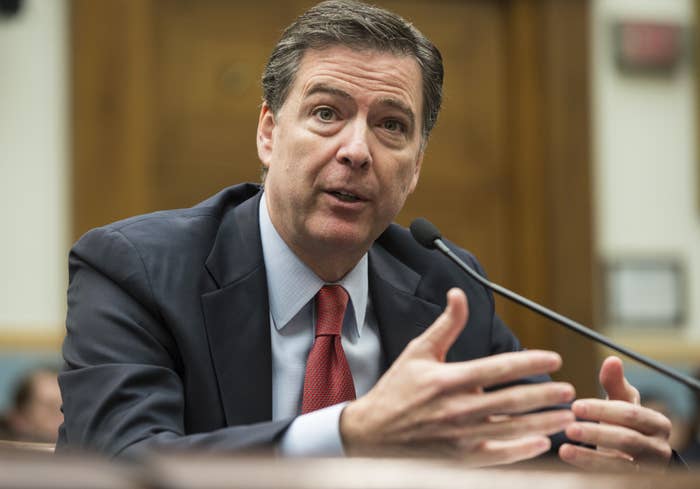
As the Justice Department decides whether or not to challenge Apple in another legal battle over a locked iPhone, FBI Director James Comey confirmed Wednesday that the method it used to access a San Bernardino attacker's device only works on the iPhone 5c.
“This worked to open this one 5c,” Director Comey said, during a speech at Kenyon College Wednesday. The method, first discovered by an unidentified third party outside of the U.S. government, was “bought” by the FBI, Comey confirmed, averting an unprecedented courtroom showdown with Apple last month.
But while the San Bernardino legal dispute fizzled, the broader debate over consumer encryption and the challenges that secure communications pose to law enforcement will continue to heat up.
On Monday, the Justice Department must inform a Judge in the Eastern District of New York if the government will seek a court order against Apple to help access another locked iPhone. And according to Comey, the San Bernardino method won’t work on other types of iPhones, increasing the likelihood that the government will continue to push for legal remedies to encryption, instead of relying on one-off technological tools.
“It’s a bit of a technological corner case, because the world has moved on to 6’s. This doesn't work in 6’s, this doesn't work in a 5s. And so we have a tool that works on a narrow slice of phones,” he said.
In New York, the iPhone in question is a 5s. Complicating matters further, the New York iPhone runs an older operating system, iOS 7, which allows Apple to extract data from the device onto a separate hard drive without having to design new software, as was the case in San Bernardino. But, according to Apple's most recent court filings in the New York case, the company will seek to test the government’s claims that the San Bernardino method does not work on other devices, and to test if no other method exists for the government to use.
Apple has argued throughout its battle with the Justice Department that the dispute is not about a single device. “This is not a case about one isolated iPhone," the company wrote in a February motion. "Rather, this case is about the Department of Justice and the FBI seeking through the courts a dangerous power that Congress and the American people have withheld."
The FBI has yet to decide if they will disclose the San Bernardino vulnerability to Apple. “We are having discussions within the government about: ‘Ok, should we tell Apple what the flaw is that was found?’” Comey said. "That’s an interesting conversation because if we tell Apple they are going to fix it and then we are back to where we started from.”
Comey also addressed criticism that the FBI and the outside party risk having the method fall into the wrong hands by sitting on the vulnerability without informing Apple of the weakness. “The FBI is very good at keeping secrets,” he said. “And the people we bought this from — I know a fair amount about them — I have a high degree of confidence that they are very good at protecting it.”
During a privacy conference in Washington, D.C. Tuesday, FBI General Counsel James Baker declined to say how much the government paid the outside party in exchange for the method. He also declined to say if the information pulled off the iPhone was useful to the San Bernardino investigation.
“It was worth the fight to make sure that we have turned over every rock that we can with respect to the investigation," Baker said. "We owe it to the victims and the families to make sure that we pursue every logical lead.”
Prior to the method’s discovery, the FBI and the Justice Department maintained that Apple was the sole entity capable of accessing the encrypted information held inside the device. Facing a dead end, the government urged a federal judge to force Apple to design new software that would bypass several security features built into the iPhone. But once the method proved successful, the Justice Department called off the legal confrontation, since the FBI no longer required Apple’s assistance to access the device.
In order to make its case in New York, the government will have to show that Apple’s help is once again necessary there, even after San Bernardino. While the Justice Department must offer the court a status update by April 11, it has given no indication that it will abandon its case in New York.
